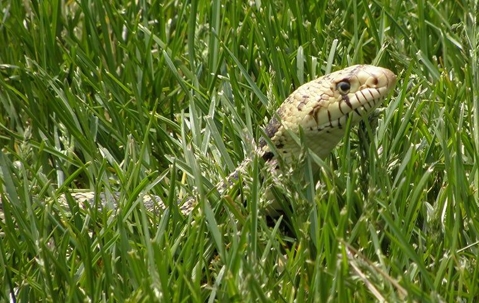Everyone knows that Snakes are reptiles that have been around for approximately 100 million years and have evolved from prehistoric lizards. They are found on every continent in the world. There are 3000 diverse species of snake on the earth. In Australia, there are around 140 species of land snakes and about 32 species of sea snakes. Australia today is home to the most assorted range of reptiles anywhere globally, including the top 10 most deadly snakes. Snakes are regrettably still very misunderstood by many individuals. Accurate Pest Control, a trusted pest control company in San Antonio, TX brings you six interesting facts about snakes.
Snakes Don’t Have Eyelids
Most people tend to find snakes to be spooky and scary at first glance because they lack eyelids! These creatures cannot blink, and so they sleep with their eyes open. In place of eyelids, they have- ‘Brille,’ a skinny membrane attached to both eyes to defend them
Snakes Use Their Tongues To Smell
Another impressive fun fact is that snakes smell with their tongue. Snakes have a very sharp sense of taste and smell – they use their split tongue to pick up the scent, just like how humans use their nose to smell. They are fascinated by the whiff of the prey, predators, a latent mate, or a rival.
Snakes Have Unique Eating Habits
Snakes cannot chew food like other creatures; hence they swallow their food whole. They have incredibly flexible lower jaws that allow them to gobble creatures 75% to 100% bigger than their skull. Once the food is ingested, the digestive system’s chemicals help break down the food quickly. Now, how cool of a fun fact is that!
Snakes Rely On External Heat
Snakes are referred to as ‘cold-blooded’ creatures, but it doesn’t mean their blood is cold in literal terms. The exact name is ‘Ectothermic,’ which means their body heat varies and is regulated by external sources. Unlike other mammals that can internally control their body temperature, reptiles need to use different heat sources, such as the sun, to keep them warm.
Not All Snakes Lay Eggs
We know for a fact that reptiles are different from mammals because they lay eggs. Humans are habituated to categorize and sort everything, but sometimes forget that nature has its own set of protocols that cannot be ignored. Roughly 70% of snakes lay eggs, and others don’t. The ones that lay eggs are called oviparous. The other 30 percent give birth to live young, similar to mammals. The reason for this is that some climates are too cold for eggs to grow and hatch. Hence, snakes living in colder temperatures don’t lay eggs.
Forms Of Locomotion
Snakes have a wavy, S-shaped movement, also known as lateral undulation. All in all, snakes have four other kinds of movements. E.g., Arboreal snakes use a type of locomotion that uses seven times more power, called a concertina. Another remarkable locomotion is used when a snake is trying to escape from a silky/smooth surface; this particular movement is called ‘slide pushing.’
If you ever encounter a snake on your property and feel scared and don’t know how to deal with it, call a wildlife animal control in San Antonio to eliminate the problem. You can rely on our licensed experts to provide safe removal of snakes, without harming them.
To learn more about fun snake facts, Call Accurate Pest Control today!

